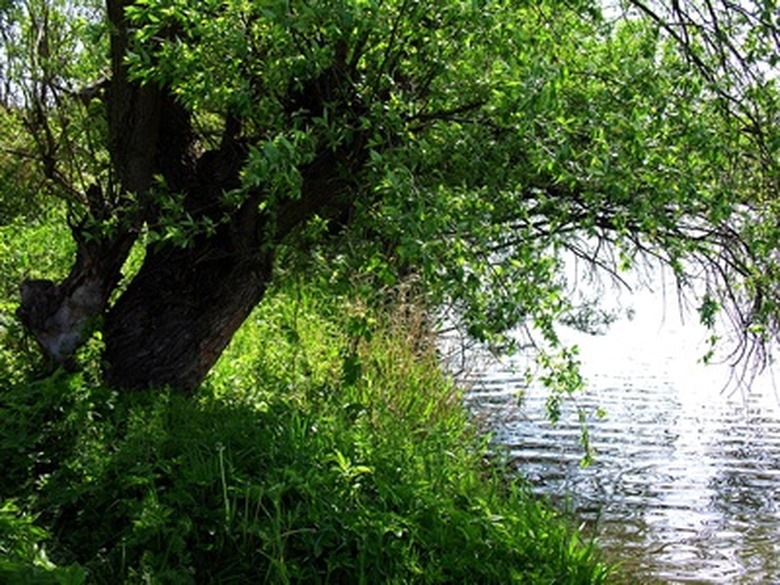Willow Oak Tree Diseases
The willow oak tree is a fast-growing tree that can reach mature heights up to 75 feet. This deciduous shade tree produces simple, rich-green foliage that turns to showy yellows in the fall. Although the willow oak is drought-tolerant, it thrives in most soil conditions and prefers moist, well-drained soils. Similar to its oak relatives, the willow oak is susceptible to several tree diseases. Some of these diseases can be injurious, if not fatal, to the tree if left untreated.
Armillaria Root Rot
Armillaria root rot, or shoestring root rot, is a common disease amongst oak trees. This soil-borne fungal disease attacks the willow oak through its root system. The disease not only causes the decay of the roots, it also decays the interior woody tissue, or cambium, of the tree's trunk. Willow oak trees that have experienced previous stress, such as long periods of drought and previous disease, are most susceptible to armillaria root rot. The infected willow oak will experience discolored foliage, premature defoliation, growth stunt and overall loss of vigor. The severely infected oak will also develop creamy white fungal growths on and around the base of the tree. The appearance of these growths indicates severe trunk rot and decay. There is no cure for armillaria root rot and the infected trunk, including the stump, should be removed.
- The willow oak tree is a fast-growing tree that can reach mature heights up to 75 feet.
- There is no cure for armillaria root rot and the infected trunk, including the stump, should be removed.
Oak Leaf Blister
Oak leaf blister is a spore-borne fungal disease that is especially active during the cool, wet periods of spring. These spores travel by wind and rain onto the foliage and buds of the willow oak. There, the spores germinate and spread infection. The leaves of the infected oak develop small, yellow blisters that appear scattered throughout the leaves. Severely infected foliage will experience leaf curl after becoming overwhelmed with blisters. Although unsightly, oak leaf blister will not cause permanent injury to the willow oak tree. This disease can be prevented with an annual fungicidal treatment that is applied in the early spring, just before the onset of the growing season.
- Oak leaf blister is a spore-borne fungal disease that is especially active during the cool, wet periods of spring.
- These spores travel by wind and rain onto the foliage and buds of the willow oak.
Hypoxylon Canker
Hypoxylon canker is a fatal oak tree disease. This spore-borne fungal disease infects the willow oak through natural openings, wounds and other points of injury. The disease infects the interior of tree and causes the decay of its sapwood. Willow oak trees that are infected with hypoxylon canker will experience yellowing and wilted foliage. The discolored foliage will begin at the top of the willow oak and work its way down, branch by branch. The tree will also experience dieback and growth stunt which is often accompanied by lightened bark that takes on a bleached appearance. There is no cure for hypoxylon canker. However, vigorously growing, healthy willow oak trees are able to defend themselves against the disease. The High Plains/Midwest AG Journal explains that trees should be removed and destroyed if 15 percent or more of the tree's crown displays symptoms of infection.
- Hypoxylon canker is a fatal oak tree disease.
- The High Plains/Midwest AG Journal explains that trees should be removed and destroyed if 15 percent or more of the tree's crown displays symptoms of infection.
